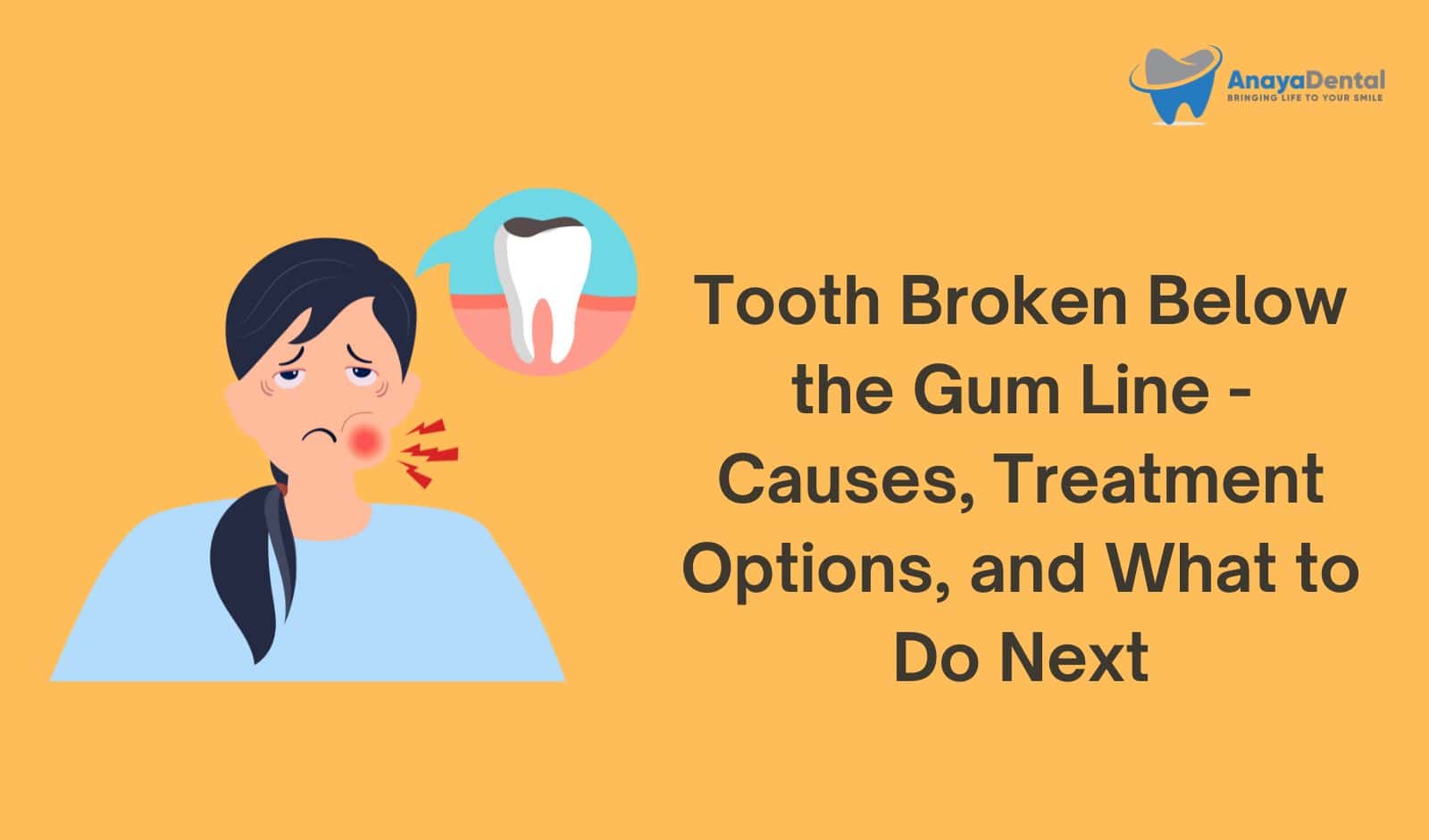Tooth Broken Below the Gum Line: What to Do
A broken tooth below the gum line is a serious dental issue. It can be caused by accidents, decay, or biting hard objects, leading to discomfort and long-term dental complications. Immediate action is necessary to prevent further damage and pain. Here’s a guide on causes, symptoms, and treatment options for a tooth broken below the gum line.
What Happens if Your Tooth Breaks Off at the Gum Line?
When a tooth breaks off at the gum line, various issues can arise. The fracture exposes sensitive inner layers of the tooth, potentially causing:
- Dental Accidents: Jagged edges may injure the lips, inner cheeks, or tongue if untreated.
- Dental Pain: If the fracture reaches the nerve endings in the pulp chamber, severe pain can occur.
- Tooth Loss: A weakened tooth structure may lead to the tooth falling out.
- Infection: The exposed area is more prone to bacterial infections, potentially leading to abscesses.
What Can Cause a Tooth to Break?
Various factors can cause a tooth to break, ranging from sudden trauma to long-term wear and tear. Below are some common causes:
Try Our Dental Calculators
- Dental Trauma: Falls, sports injuries, or blows to the face can cause teeth, especially the front ones, to break.
- Biting Hard Foods: Foods like popcorn kernels, ice, or hard candy can crack or break teeth.
- Age: Teeth become more brittle with age, increasing the risk of fractures.
- Bad Oral Habits: Using teeth to open objects or excessive grinding (bruxism) can weaken tooth structure.
- Weakening Restorations: Large fillings or root canals can weaken a tooth’s integrity, making it more likely to break.
What Happens if You Break a Tooth at the Gum Line?
When a tooth is broken at the gum line, it’s harder to treat than a regular fracture due to its proximity to the surrounding tissues. Some potential issues include:
- Bleeding Gums: The broken tooth can cause trauma to the surrounding gum tissue.
- Severe Pain: Nerve exposure can lead to sharp, intense pain, especially when chewing.
- Swollen and Tender Gums: The injury can cause inflammation around the broken tooth.
- Tooth Sensitivity: Exposed nerves or dentin can make the tooth sensitive to hot, cold, or air.
- Abscess: An untreated broken tooth can lead to an infection or abscess in the gum tissue.
Can a Tooth Broken at the Gum Line Be Saved?
Yes, a tooth broken at the gum line can often be saved, depending on the severity of the damage and how quickly treatment is sought. Here are some treatment options:
| Treatment Option | Description |
|---|---|
| Composite Bonding | A cosmetic procedure where tooth-colored resin is applied to rebuild and shape the broken part of the tooth. |
| Tooth FillingFor moderate damage, a filling can restore function and protect the tooth from further decay. | |
| Root Canal Treatment | If the pulp is exposed, a root canal removes damaged tissue to prevent infection. The tooth is then capped with a crown. |
| Tooth Extraction | In cases of severe damage, extraction may be necessary, especially if the tooth is at risk of further breakage or infection. |
Statistics on Tooth Breakage
While any tooth can break, certain teeth are more prone to fractures due to their location and function in the mouth. Here’s a breakdown of common cases:
| Tooth Type | Likelihood of Breakage |
|---|---|
| Molars | Higher due to chewing pressure |
| Front Teeth | High due to dental trauma |
In particular, molars are more likely to break due to the pressure they endure during chewing, while front teeth are more prone to breakage from direct trauma such as accidents or sports injuries.
What to Do if Your Tooth Breaks Below the Gum Line
If you break a tooth below the gum line, taking immediate action can reduce pain and prevent further complications:
- Rinse Your Mouth: Use warm water to clean the area.
- Apply Pressure: If there is bleeding, apply gentle pressure with a clean cloth or gauze.
- Use a Cold Compress: Apply a cold compress to reduce swelling.
- Avoid Using the Tooth: Don’t chew or put pressure on the broken tooth.
- Take Pain Relievers: Over-the-counter medication can help manage discomfort until you see a dentist.
- Visit a Dentist Immediately: Even if the pain subsides, a dental professional should assess the damage to prevent complications.
Conclusion
A broken tooth below the gum line is a serious issue that requires prompt attention. Whether it’s caused by trauma, biting hard objects, or long-term habits like grinding, immediate treatment can often save the tooth. Depending on the severity, treatments range from fillings and bonding to root canals and, in extreme cases, extractions. If you suspect your tooth is broken, seek dental care immediately to avoid long-term complications such as infection or tooth loss.





